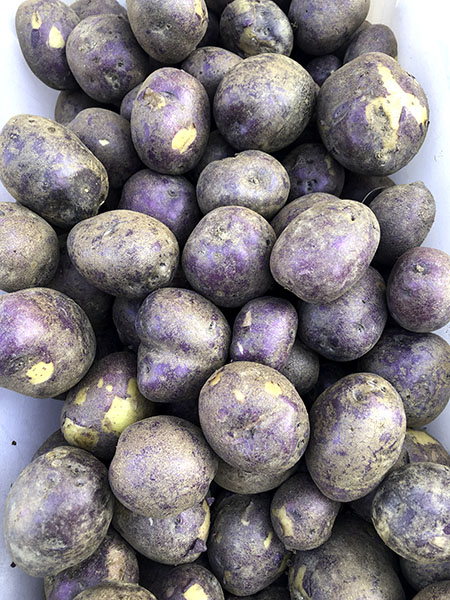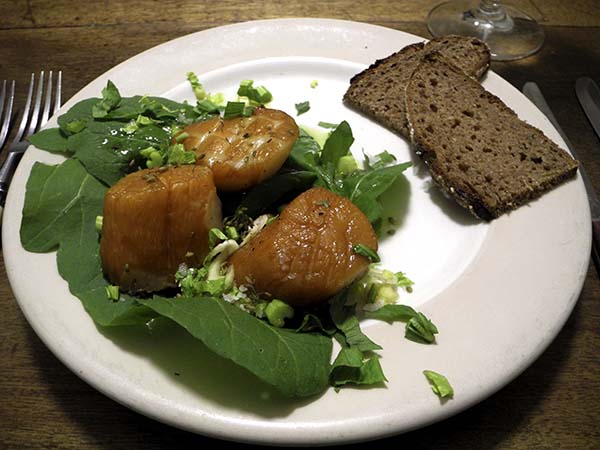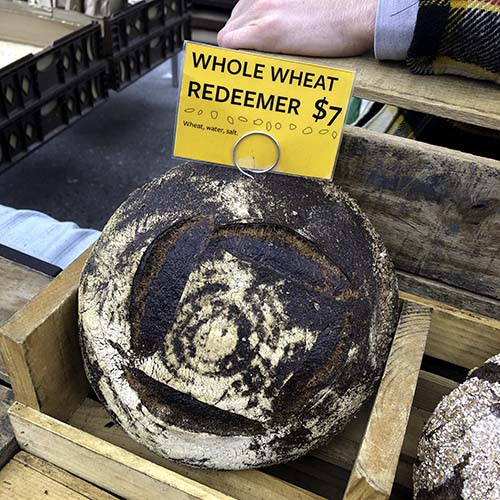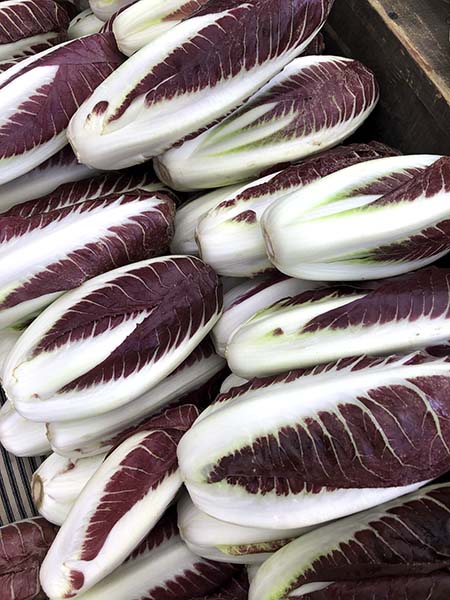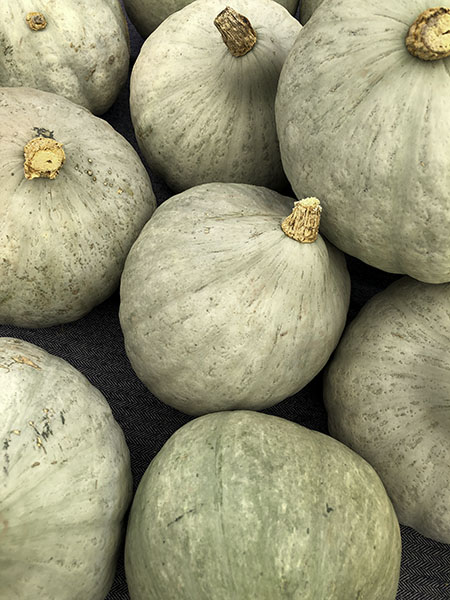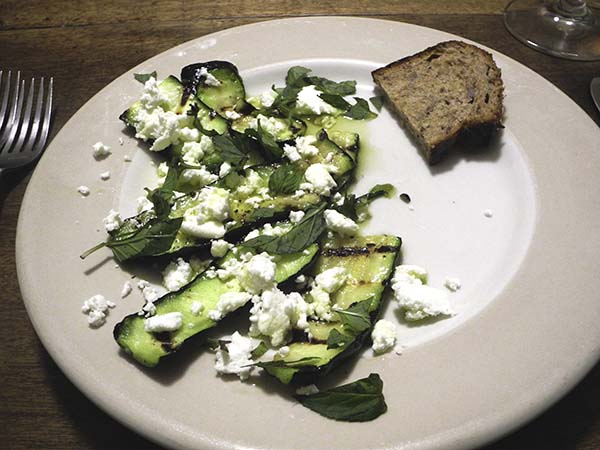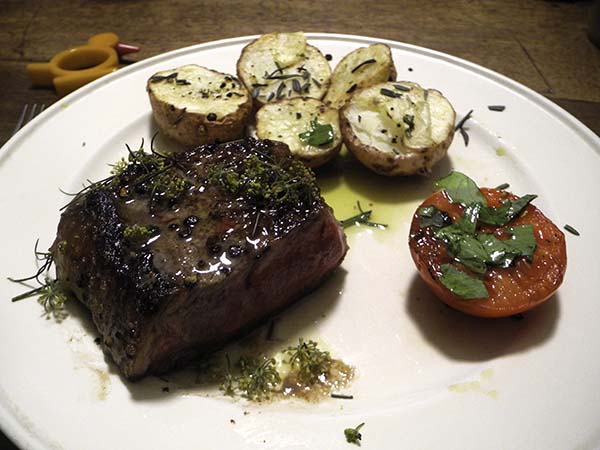
Oh my.
Yes.
We both love game, but I’m pretty certain I’ve never prepared or eaten partridge before. It doesn’t show up anywhere on this blog, and where else would I have had the opportunity, especially before I started it, in 2009?, so I didn’t really know what to expect.
While I was planning and cooking Saturday’s dinner, I hadn’t really been thinking about how dark in color or gamey it might be. I was mostly concerned about how to cook it to best advantage. If I had given it a thought, I’d have assumed that partridge would be darker and more gamey than the centerpiece of our meal that night actually turned out to be.
But what flavor!
I’m used to thinking ruddy and gamey is what wild fowl are all about (dove and quail have been my favorites) , but this bird gave me a whole new appreciation for the more subtle but very rich flavors of fowl that do not hang out in the traditional farm yard, but which don’t scream “liver!”.
The excellent, and extraordinarily simple recipe I used is from Rose Gray and Ruth Rogers inestimable volume, ‘Italian Easy’; Recipes from the London River Cafe‘(page 160 in my edition).
- two 1-pound chukar partridges [alectoris chukar] from Quattro’s Game Farm & Store in the Union Square Greenmarket, their backbones removed with a heavy kitchen scissors where the thin ribs join it, then each bird pushed flat, open side down, on the surface of a platter or large oven pan, seasoned on all sides with sea salt, freshly ground black pepper, and most of one crushed dried Itria-Sirissi chili, pepperoncino di Sardegna intero from Buon Italia, rubbed with some Whole Foods Market house Portuguese olive oil, covered all over with a mix of fresh and dry breadcrumbs, a combination of moist crumbs from a part of the only bread I had on hand, a very intensely flavored loaf of Lost Bread Co.’s Homadama (wheat, corn, water, maple syrup, salt, slaked lime) and, to help overcome the sponginess of the cornbread, some totally dried homemade crumbs that were themselves a mix of many different kinds of breads, the partridges then left aside to rest for something over 30 minutes before they were placed above medium flames on a 2-burner Lodge cast iron grill pan and grilled for about 25 minutes, turning frequently and from time to time squeezing organic Whole Foods Market lemon halves on top, the flames turned off and the birds allowed to rest for about 5 minutes, covered loosely with aluminum foil if desired, arranged on the plates with micro red amaranth arranged at its edges, and ideally perhaps served with more lemon (I didn’t have any left at this point that night, but I had been very generous earlier with what I did have); in any event I had somehow managed to cook them to a perfect state, roughly showing 180ºF, inside their thighs, with the help of an instant thermometer
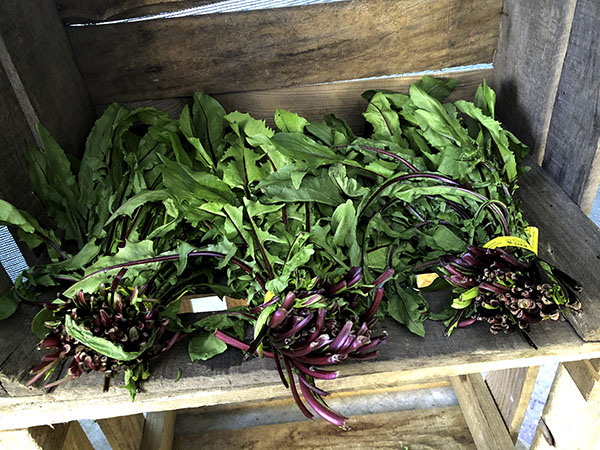
- red dandelion leaves from Norwich Meadows Farm, well washed and thoroughly dried, dressed in a good Cretan (Chania) olive oil, Renieris Estate ‘Divina’ (a Koroneiki varietal), from Chelsea Whole Foods Market, local Long Island sea salt from P.E. & D.D. Seafood, freshly-ground black pepper, and a bit of Columela Rioja 30 Year Reserva sherry vinegar

- thirteen or 14 ounces of Hakurei turnips from Keith’s Farm, washed, scrubbed, peeled, cut into half-inch-thick slices, tossed with Portuguese olive oil, sea salt, freshly-ground black pepper, a small handful of rosemary leaves from from Phillips Farms, and little more than a pinch of a crushed dried piece of golden/bronze habanada pepper, roasted inside a large unglazed Pampered Chef ceramic pan for about 30 or 35 minutes at 425º, or until tender and beginning to carbonize
- the wine was an Oregon (Willamette Valley/Yamhill-Carlton) red, Fairsing Vineyard Pinot Noir 2016, from the vineyard directly
- the music was a glorious performance and a brilliant recording of Mozart’s 1791 Singspiel, ‘Die Zauberflote’, William Christie conducting his ensemble, Les Arts Florissants, with soloists including Hans Peter Blochwitz, Willard White, and Natalie Dessay

